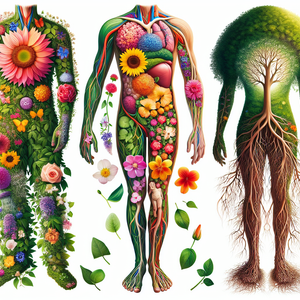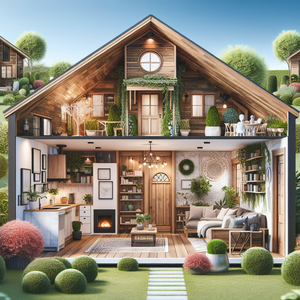Treehouses and the Art of Living Lightly

Like many architects, their career began with grandiose projects: sprawling complexes and glittering skyscrapers that symbolized human ambition. However, as their awareness of the environmental crisis grew, they found themselves increasingly uneasy. The resource-intensive nature of these projects starkly contrasted with their growing understanding of sustainability, and the architect began to question the very premise of their work. A pivotal moment came during a sabbatical, when they volunteered with an organization dedicated to building sustainable housing for underprivileged communities. Immersed in the challenges and rewards of creating small, intentional spaces in harmony with their surroundings, they experienced a profound shift in perspective. This sabbatical marked the beginning of a new career trajectory, one rooted in eco-conscious design and the belief that architecture could—and should—work with nature rather than against it. Over the years, the architect became a prominent voice in sustainable design. Their portfolio evolved to include energy-efficient homes, structures built from natural and reclaimed materials, and community projects that prioritized minimal environmental impact. Yet, even as they built a successful career in green architecture, a childhood dream persisted: the desire to build a treehouse.
The Treehouse as a Symbol
For the architect, the treehouse was more than just a whimsical fantasy. It represented freedom, creativity, and a profound connection to the natural world. It was a symbol of the simplicity that had become central to their philosophy of life and work. After years of envisioning, they finally decided to bring this dream to life. The treehouse project was not merely a personal retreat. It was conceived as a proof of concept—a physical manifestation of the architect’s sustainable design principles. The goal was to create a space that was not only functional and beautiful but also harmonious with its environment. The journey began with finding the perfect tree—one strong enough to support the structure while ensuring that its ecosystem wouldn’t be harmed. After months of searching, the architect found their muse: a majestic oak tree on a friend’s rural property. With its sprawling canopy and sturdy trunk, the tree became the foundation of their vision.
Designing Among the Branches
The challenges of designing and building a treehouse were unlike any the architect had faced before. How could they create a structure that respected the tree’s natural growth while still ensuring safety and usability? How could they balance modern conveniences with the need to live sustainably? The architect approached the project with the same ethos that defined their career: working with nature, not against it. Every material was chosen with care. Reclaimed wood formed the majority of the structure, while solar panels provided electricity. A rainwater collection system ensured self-sufficiency, and the insulation—made from sheep’s wool—was entirely eco-friendly. The design itself was minimalist, reflecting the architect’s belief in intentional living. The treehouse featured a cozy sleeping loft, a small kitchenette, and a reading nook bathed in natural light. Large windows framed panoramic views of the surrounding forest, while an outdoor deck became the perfect perch for birdwatching and stargazing. Each element of the design was carefully considered, demonstrating that living lightly doesn’t mean sacrificing comfort or beauty.
Lessons in Sustainability and Mindfulness
The treehouse quickly became more than a personal escape; it turned into a laboratory for sustainable living. By spending extended time in the treehouse, the architect gained insights into how design choices could shape behavior and mindset. Living in a small space, for example, naturally encouraged mindful consumption. With limited room for belongings, the architect found themselves prioritizing quality over quantity, choosing items that were both functional and meaningful. Waste reduction became second nature, as did a heightened awareness of energy and water usage. Perhaps most profoundly, the time spent in the treehouse deepened their connection to nature. Surrounded by the sights, sounds, and rhythms of the forest, they experienced firsthand the emotional and mental benefits of being immersed in green spaces. These lessons became integral to their work, inspiring them to incorporate biophilic design elements—such as green roofs, natural ventilation systems, and indoor gardens—into their projects. The treehouse also became a teaching tool. The architect began hosting workshops and tours, sharing the lessons they had learned with clients, students, and fellow architects. Through these interactions, they emphasized that sustainability is not just about materials or technology; it’s a mindset. It’s about understanding our interconnectedness with the natural world and making choices that reflect that understanding.
The Art of Living Lightly
Today, the architect’s treehouse stands as a testament to the art of living lightly. It is not an extravagant structure, but that is precisely its beauty. It embodies the idea that life’s greatest joys often lie in simplicity, in reconnecting with nature, and in making thoughtful choices about how we live. Through their work, the architect continues to challenge conventional ideas about architecture and lifestyle. Whether designing urban homes with passive cooling systems, consulting on eco-conscious community projects, or teaching others how to build sustainably, they carry the lessons of the treehouse with them. In a world facing unprecedented environmental challenges, the treehouse offers a quiet but powerful reminder: profound solutions often arise from simple, thoughtful actions. By building among the branches, the architect has shown that it is possible to live in harmony with nature—and, in doing so, to rediscover the wonder and freedom of our childhood dreams.
The treehouse stands as a quiet but powerful reminder of the art of living lightly. It shows that profound solutions can arise from simple, thoughtful actions, and that reconnecting with nature can lead to joy, freedom, and harmony with the world around us.
Sustainable Architect
Sustainable design firms, green architecture consultancies, or urban planning organizations
Core Responsibilities
Design eco-conscious buildings using reclaimed materials, renewable energy systems, and efficient water management solutions.
Integrate biophilic elements like green roofs, natural ventilation, and indoor gardens to enhance occupant well-being.
Collaborate with environmental consultants and engineers to achieve net-zero or carbon-neutral structures.
Key Skills and Qualifications
Expertise in sustainable building certifications (e.g., LEED, WELL, or Passive House).
Proficiency in energy modeling software and green material sourcing.
Eco-Friendly Construction Project Manager
Green construction companies, real estate developers committed to sustainability, or non-profit housing initiatives
Core Responsibilities
Oversee the construction of environmentally friendly projects, ensuring adherence to sustainable building standards.
Manage budgets, timelines, and teams while maintaining eco-conscious construction practices.
Source materials responsibly, prioritizing local, recycled, and renewable resources.
Key Skills and Qualifications
Strong knowledge of sustainable construction methodologies and renewable energy systems.
Experience with tools like BIM (Building Information Modeling) and green certification processes.
Biophilic Interior Designer
Interior design firms focused on wellness, architecture firms, or hospitality companies
Core Responsibilities
Create interior spaces that connect occupants to nature through natural materials, lighting, and plant integration.
Design layouts that promote well-being, productivity, and mindfulness in residential, commercial, or institutional spaces.
Incorporate sustainable practices, such as repurposing materials and using non-toxic, eco-friendly furnishings.
Key Skills and Qualifications
Proficiency in biophilic design principles and eco-friendly material selection.
Strong portfolio showcasing work that emphasizes harmony with nature.
Environmental Consultant - Green Building Specialist
Environmental consulting firms, government agencies, or sustainability-focused non-profits
Core Responsibilities
Advise architects, engineers, and developers on reducing the environmental impact of construction projects.
Conduct energy audits, lifecycle analyses, and environmental impact assessments.
Recommend sustainable solutions such as solar energy systems, water recycling technologies, and passive design strategies.
Key Skills and Qualifications
Expertise in environmental regulations, green building certifications, and renewable energy systems.
Familiarity with software like EnergyPlus, RETScreen, or OpenStudio for energy modeling.
Sustainable Living Workshop Facilitator
Non-profits, eco-tourism destinations, or educational institutions
Core Responsibilities
Design and lead workshops on topics like small-space living, sustainable homebuilding, and mindful consumption.
Develop educational materials and hands-on activities that empower participants to adopt eco-friendly practices.
Partner with community organizations, schools, and sustainability advocates to promote green living initiatives.
Key Skills and Qualifications
Background in education, environmental science, or sustainable design.
Strong public speaking and workshop facilitation skills, with experience in engaging diverse audiences.


